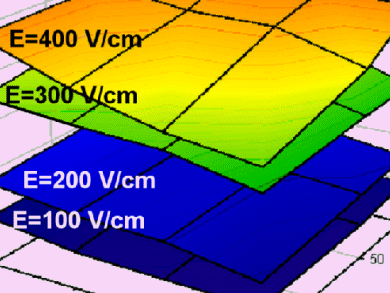Miniaturization has driven important developments in the field of bioseparations. Microscale separation techniques offer attractive advantages over traditional bench-scale methods, such as reduced sample and reagent consumption, higher resolution and sensitivity, low cost, and shorter processing time.
A team around Blanca H. Lapizco-Encinas, Microscale Bioseparations Laboratory, Centro de Investigación y de Estudios Avanzados del IPN Unidad Monterrey, Apodaca NL, México, presents the characterization of the electrokinetic mobility of three different species of microorganisms (bacteria, yeast, and microalgae cells) in a glass microchannel employing micro particle image velocimetry (µPIV).
The reseachers show that microbe electrokinetic mobility is a function of size, surface charge, and dielectric properties. In addition, electrokinetic differentiation was achieved employing a mixture of the three microorganisms, where an electropherogram was obtained in one minute, allowing to identify that three different species were present and demonstrating the potential of microscale electrokinetic methods for microorganisms detection.
The results of this study are evidence of the great potential of microscale electrokinetic techniques for fast identification and analysis of microbes.
Different fields, such as medical diagnostic, and food and water safety seek for simple, robust, and fast methods for microbial analysis.
- Electrokinetic Mobilities Characterization and Rapid Detection of Microorganisms in Glass Microchannels,
L. D. Garza-García, V. H. Pérez-González, O. A. Pérez-Sánchez, B. H. Lapizco-Encinas
Chem. Eng. Technol. 2011, 34 (4).
DOI: 10.1002/ceat.201000298




